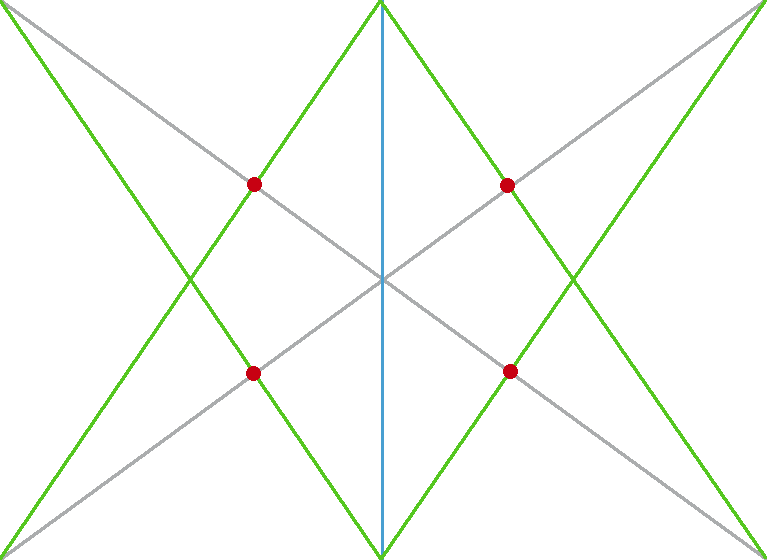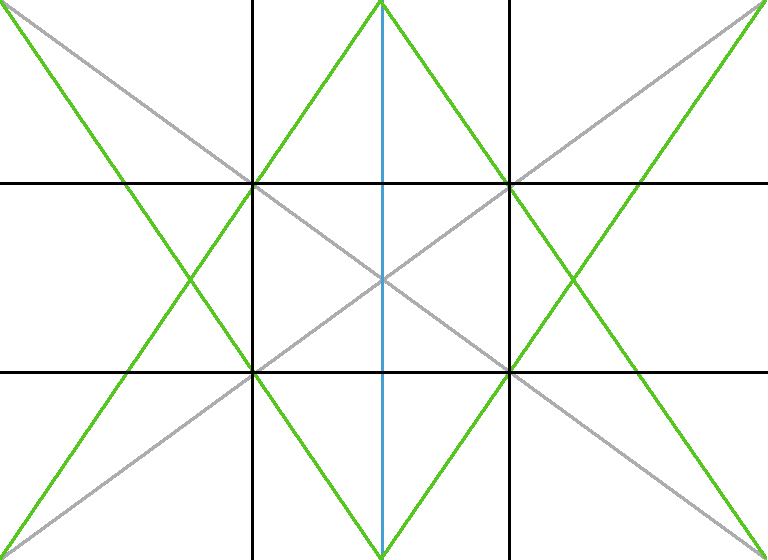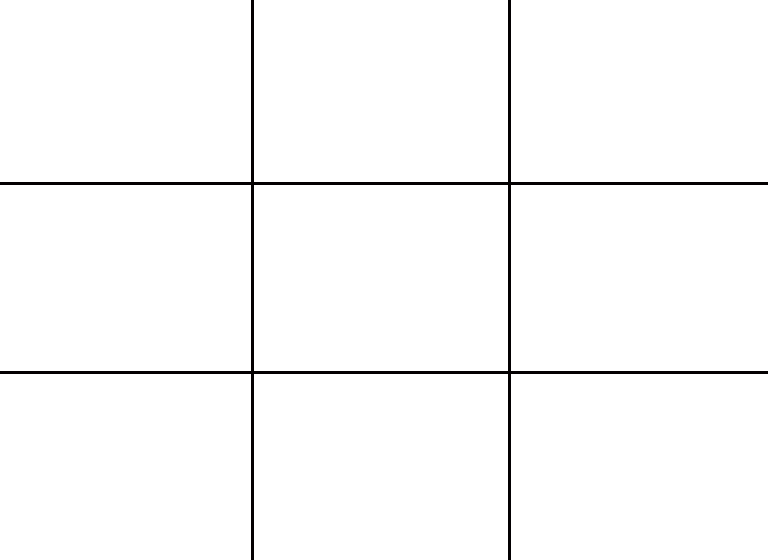In this guide, we’ll make a rule of thirds grid without needing to use a ruler to measure the canvas, or without having to divide numbers. We’ll employ a traditional technique, favored by artists, to divide our canvas into exact thirds. This technique has been used for a very long time.
What is the Rule of Thirds?
The Rule of Thirds is a fundamental concept in visual composition. It divides your artwork or photograph into a 3×3 grid with two horizontal lines and two vertical lines, resulting in nine equal parts. It’s a simple yet effective guideline used by artists and photographers to create balanced and visually appealing compositions.
Drawing a Rule of Thirds Grid
This method allows you to create a Rule of Thirds grid on canvases of any size, whether they are rectangular or square, and whether they are in portrait or landscape orientation.
Start by drawing diagonal lines from each corner of the canvas. These lines intersect at the center, effectively dividing the canvas into halves and then quarters. Then draw a vertical line up the center of the canvas. This vertical line should pass through the center point where the diagonal lines intersect, effectively splitting the canvas into two equal halves vertically.

After drawing the vertical line through the center of the canvas, draw diagonal lines starting from the bottom corners of the canvas and extending upward towards the top of the central vertical line. These diagonal lines intersect with the original diagonal lines you drew earlier. The points where these new diagonal lines intersect give us out thirds. Next we need to repeat this step to find the lower thirds of our canvas.

All we need to do now is to add in vertical and horizontal lines joining up the points a we have split our canvas in to 3a x3 grid ready to use.


Now that you’ve learned how to divide your canvas into thirds using the Rule of Thirds grid, you have a practical tool for positioning elements in your compositions. Experiment with it to enhance your artwork and photos. If you have anything to add, please comment below. Your insights and questions are always welcome. Happy creating!
